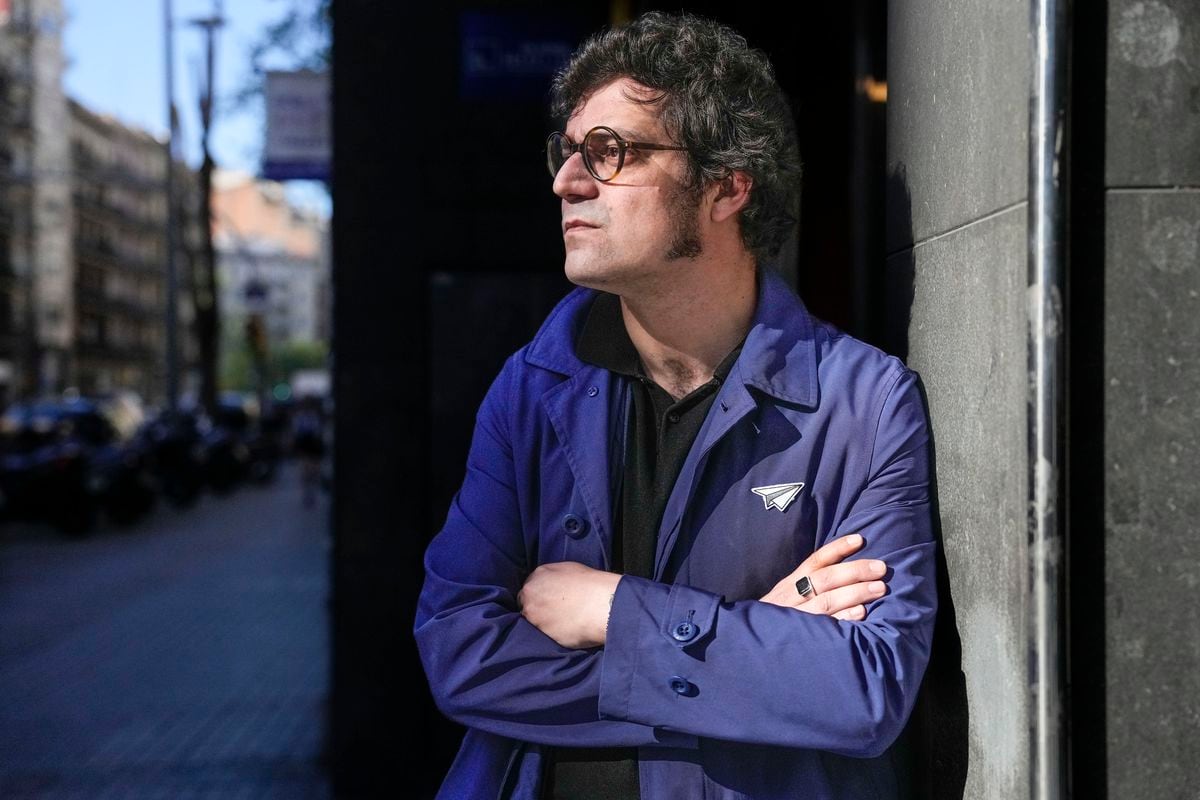Kempten - A paradigm shift is needed, away from the particular view towards comprehensive seeing, thinking and acting.
This could be the micro-summary of the panel discussion with a keynote speech on the subject of "Forget the Allgäu (don't)!"
Or as Franz Schröck, Managing Director of the Architekturforum (af) Allgäu, described it at the beginning: One thinks far too little overarching and must “consider the various systems such as culture, landscape, infrastructure and settlement” “in context”.
The af Allgäu, the Association of German Architects (BDA), the State Academy of Fine Arts Stuttgart (abk), Meeting Point Architecture Swabia of the Bavarian Chamber of Architects (TAS) and the Swiss architect and abk professor for design and urban development Fabienne Hoelzel, who also invited gave the keynote speech.
The focus was on the study area "Upper Allgäu" between Dietmannsried and Fischen, with which nine students of the urban planning studio "Forget the Allgäu (don't!)" In their proposals for settlement and infrastructure measures did not comply with the prevailing Allgäu cliché (Wiesen , Mountains, forests), but the logic of the formative natural area of the Iller. The “traditionally poor area” is therefore seen as relatively structurally weak to this day. The criticism was - also in the room - the sometimes "aggressively driven" mass, day and weekend tourism as a source of income, which urgently necessitates directing visitors.
Contrary to widespread opinion, according to Hoelzel, most people in Germany do not live in metropolises but “in small towns” and “contemporary planning approaches do not do justice to this”. She pictorially compared the former model city with a clearly defined boiled egg. Today's model city, as well as the space between Kempten and Oberstdorf, on the other hand, resemble a “scrambled egg” with “unclear contours”.
So how do you deal with “the urbanized planet”? An important point are the strong network structures and "planning must start with such structures," emphasized Hoelzel. For example, the Glattalbahn in the canton of Zurich is a “great project” because of its “logical network”. How the Matterhorn should be thought together with the cantons, an awareness must also arise in the Allgäu that the Nebelhorn is part of the “urban area” here.
As described in the publication “Forget the Allgäu (don't!)”, The study area is an example of a landscape shaped by humans with a juxtaposition of different “systems” and also urban sprawl. The visible consequences are settlement areas and infrastructure buildings away from metropolitan areas and the growing settlement of areas formerly used for agriculture. The control of regional and supraregional processes as an overarching goal is, according to the study, still insufficient in communal, decentralized planning, the reasons mostly of a political nature. The designation of building land for residential and commercial purposes creates additional tax revenue and the increasing demand for living space also creates pressure. Nevertheless, one must "think the region together", according to Hoelzel,even if the “functional space” is about tax money, etc.
Networker »Gäulandlink«
A project that, from Hoelzle's point of view, “all municipalities can participate”: Away from the car, towards the “Gäulink” - a kind of tram - which connects the “Upper Allgäu”.
Because, she was convinced, “you have to bring the actors to the table” and initiate a project as a “vehicle” for which 60 to 70 percent of the mayors are won.
Rediscovering the infrastructure and thinking “more complex” instead of just “one-dimensional” is what Hoelzel has in mind.
Despite two unoccupied chairs (District Administrator Indra Baier-Müller had to pass due to other appointment obligations and Meckatzer-Löwenbräu boss Michael Weiß was prevented), a lively, inspired by Dr. Jörg Heiler, regional chairman of BDA Bavaria and board member of the Bavarian Chamber of Architects, pointedly moderated, initially a panel discussion with: Renate Deniffel, district councilor and 1st mayor Wildpoldsried; Klaus Fischer, spokesman for the management of Allgäu GmbH; Verena Krappitz, ABK students in the study project "Forget the Allgäu (don't!)" And Fabienne Hoelzel.
Fischer attested that the Allgäu, which is a tourist region, “but we live from industry”, has a lot of “ideal world expectation”.
Leisure is also an industry.
With a view to “500 tourers per day” on the Riedberger Horn and the mountains as part of the whole, he also called for spaces to be created “that are taboo for everyone”.
At Allgäu GmbH you think “the systems already together”, otherwise neither the guests nor the economy would get what you promise them.
However, you have to "get some systems up and running again," says Fischer.
Lived urban landscape
A thorn in the side were the growing commercial areas, which were specially approached and also took up space. Krappitz therefore explained the idea of locating attractive points along the “Gäulink” line, such as day-care centers, shopping facilities, living space, work, etc., so that everything can be done 'on the way', so to speak. She also brought the idea into play of using green spaces between company buildings such as those from Bosch as a kind of urban gardening area and thus also creating awareness for the production of food.
Deniffel found it “instructive” to have learned that “we live in an urban space”.
That is not in the consciousness and that is how you see the mountains, but hide the power lines and infrastructure.
She was extremely enthusiastic about the idea of a "Gäulink", as well as about the idea of "intermunicipal commercial space".
However, a few things would then have to be changed in terms of taxation.
“Why you shouldn't build over supermarkets,” the politician couldn't understand at all.
It is an attractive option, especially for “young living” and therefore people who “are not yet looking for their final living space”.
As Heiler noted, there are “many hurdles” such as building laws “that prevent such overlaps”.
"Waste products from individual planning"
Hoelzel saw a number of "waste products from individual planning", such as climbing gyms in commercial areas, and spoke out in favor of more quality.
The “monofunctional business parks” are to be transformed into “new centers” and the potential of redensification is to be exploited.
In this way, living, working, infrastructure and much more could be brought together in the new centers.
Since mobility is currently an issue, she would try such a joint project, especially since "the electric motor is the completely wrong discussion".
Rather, at Hoelzel the idea of “collective traffic” is in the room.
Heiler was also able to imagine mobility as an approach, because roads “have to be thought of beyond the region”.
But above all, he brought an International Building Exhibition (IBA) Allgäu into play.
Deniffel was immediately enthusiastic about such a funded real-life laboratory. "Think big, I like that," she said.
And “what will be on the agenda in the district council in eight weeks?”, Heiler nailed the district councilor and Fischer to a meeting.
“We have to start,” said Deniffel, but it would take “a very, very much effort” to even get a glimmer of understanding.
Fischer sees the issue of mobility in the foreground.
For Kemptens construction consultant Tim Koemstedt in the audience the question arose how one could bring “the rigid structures” together in the periphery, since everyone first thinks of their own district.
The Allgäu GmbH already offers an approach, but there are “still thick boards to be drilled”.
Above all, he saw the regional planning on the train to bring daycare centers, doctors, etc. to the route.
In addition, "enormous costs" are associated with it.
Heiler could imagine an Allgäu platform for regional development, which, according to Fischer, is "a long way off".
However, one has to do with Baden-Württemberg and different planning associations across borders, slowed Fischer to great enthusiasm.
Emotional attachment is required
Listener Veronika Heilmannseder, who missed the “emotional bond”, made a flaming contribution. “It has to be fun to live like this,” she emphasized, and “we need good pictures” to take people with us. Above all, however, the topic must reach the decision-makers. After a brief query as to how many mayors or political representatives were present, the results were sobering. In addition to Deniffel, only Rettenberg's mayor Nikolaus Weißinger (both CSU) was present plus the long-time Fischen councilor Uschi Müller. Weißinger also emphasized that it was "important that the decision-makers are there who also sign the invoices" - a goal that should be addressed.
With fresh Kässpatzen the topics could then be further deepened in the green in front of the building.
The publication "Forget the Allgäu (don't!)" Is in the controller.
House of Baukultur to take away.
The exhibition on the subject can also be visited there.
Also read: The exhibition "Stallbauten" shows exemplary useful buildings












